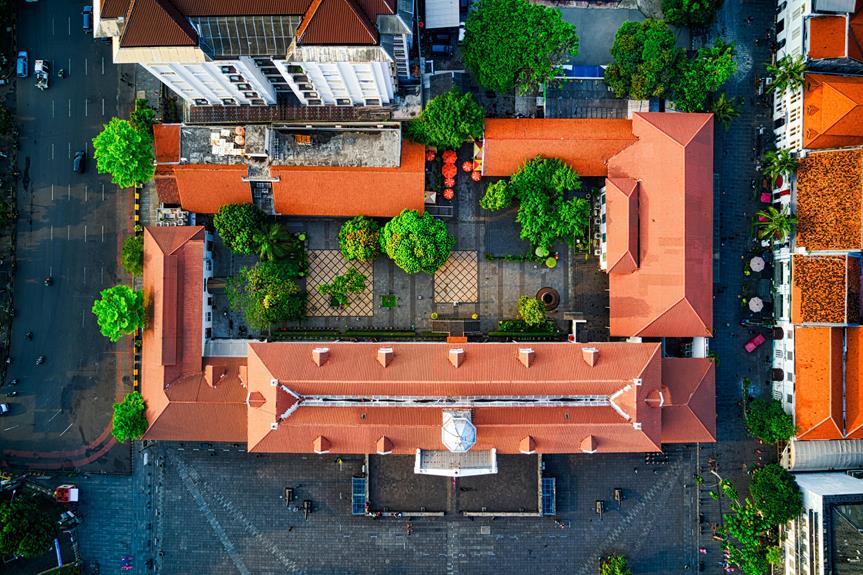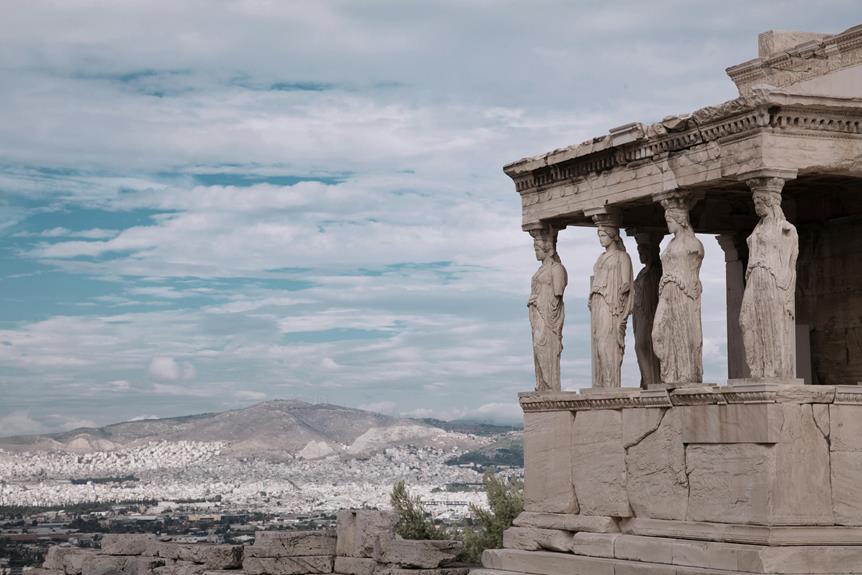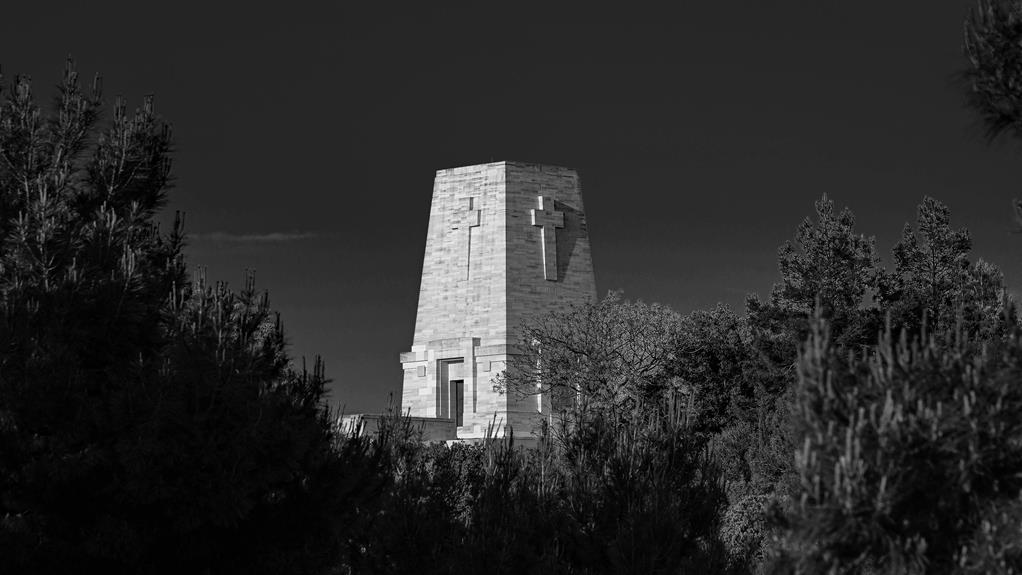The Banda Aceh Tsunami Museum stands as a solemn tribute to the tragic events that unfolded in 2004, serving as a poignant reminder of the devastation caused by the Indian Ocean tsunami. Its architectural significance and thought-provoking exhibits offer visitors a glimpse into the resilience of the human spirit amidst calamity. The museum's impact on the local community and its role in fostering a sense of unity and preparedness in the face of natural disasters make it a compelling destination for those seeking to understand the profound implications of historical tragedies.
Key Takeaways
- Recalls the 2004 Indian Ocean tsunami
- Blends architecture with symbolism
- Exhibits artifacts and survivor testimonies
- Reflects community resilience and unity
- Offers immersive and emotional visitor experience
Historical Significance of the Museum
The Banda Aceh Tsunami Museum in Indonesia stands as a poignant reminder of the catastrophic events that unfolded on December 26, 2004. The impact of the 2004 Indian Ocean earthquake and tsunami was devastating, with Banda Aceh being one of the hardest-hit areas, facing immense loss of life and widespread destruction. In the aftermath, reconstruction efforts were monumental, aiming not only to rebuild physical structures but also to heal the emotional wounds and preserve the memory of those who perished.
The museum serves as a symbol of the resilience of the human spirit in the face of tragedy. It stands as a symbol of remembrance and a place for reflection, honoring the lives lost while educating visitors about the importance of disaster preparedness and community resilience. The impact of the tsunami on the region was profound, leading to a collective effort towards rebuilding lives and infrastructure.
Reconstruction efforts following the tsunami focused on not just restoring the physical environment but also on fostering a sense of unity and strength within the community. The museum, through its exhibits and architecture, embodies this spirit of resilience and renewal. It stands as a beacon of hope and a reminder of the importance of coming together in times of adversity to rebuild and move forward.
Architectural Design and Symbolism
Representing a harmonious blend of architectural innovation and poignant symbolism, the Banda Aceh Tsunami Museum in Indonesia stands as a testament to both remembrance and resilience. The museum's architectural design is deeply symbolic, reflecting the devastating impact of the 2004 Indian Ocean earthquake and tsunami while also embodying the strength and hope of the Acehnese people.
The structural elements of the museum play a significant role in conveying its symbolic message. The building's iconic ship-like structure serves as a reminder of the destructive force of the tsunami, with its tilted walls symbolizing the overwhelming waves that ravaged the region. The museum's layout, characterized by narrow corridors and high walls, creates a sense of confinement and chaos, immersing visitors in the harrowing experience of the disaster.
Moreover, the use of materials such as dark concrete and rusted steel adds to the museum's somber atmosphere, evoking the destruction and loss caused by the tsunami. In contrast, the incorporation of natural lighting and open spaces represents hope and renewal, highlighting the resilience and recovery of the Acehnese community in the aftermath of the tragedy.
Exhibition Highlights and Artifacts
Highlighting the profound impact of the 2004 Indian Ocean earthquake and tsunami, the Banda Aceh Tsunami Museum's exhibition features a compelling array of artifacts that offer a poignant glimpse into the tragedy and the resilience of the Acehnese people. The museum showcases survivor testimonies through personal belongings salvaged from the disaster, such as clothing, photographs, and household items, providing visitors with a deeply moving insight into the human stories behind the catastrophic event.
Interactive displays further engage visitors by allowing them to explore the timeline of events leading up to the tsunami, the immediate aftermath, and the long-term recovery efforts. These exhibits not only educate the audience about the scale of the disaster but also emphasize the strength and unity of the Acehnese community in rebuilding their lives and city.
In addition to its exhibition highlights, the museum actively engages in conservation efforts to preserve the artifacts for future generations. Through meticulous curation and restoration work, the museum makes certain that these tangible reminders of the tragedy remain intact and accessible to the public. Additionally, educational programs organized by the museum aim to raise awareness about natural disaster preparedness and promote solidarity in facing such challenges. The Banda Aceh Tsunami Museum stands as a poignant tribute to those who lost their lives and a validation of the resilience and spirit of survival embodied by the Acehnese people.
Impact on the Local Community
Examining the aftermath of the 2004 Indian Ocean earthquake and tsunami, the Banda Aceh Tsunami Museum reveals the profound impact on the local community and their enduring response to the catastrophe. The devastation caused by the tsunami not only took a toll on the physical infrastructure but also deeply affected the social fabric of the community. In the years following the disaster, the community started on a journey of recovery, rebuilding homes, businesses, and essential services.
The economic development of Banda Aceh faced significant challenges in the wake of the tsunami. The destruction of essential infrastructure and the loss of livelihoods posed obstacles to the local economy. However, the resilience and determination of the community played a pivotal role in the gradual revival of economic activities. Through various initiatives and support from local and international organizations, the community worked tirelessly to restore economic stability and create sustainable opportunities for growth.
Community recovery efforts were multifaceted, encompassing not only rebuilding physical structures but also addressing the psychological and emotional trauma inflicted by the disaster. The Banda Aceh Tsunami Museum stands as a proof to the strength and unity of the local community in overcoming adversity and rebuilding a hopeful future. The museum serves as a reminder of the resilience of the human spirit and the power of collective action in times of crisis.
Visitor Experience and Reflection
The museum's immersive displays offer visitors a poignant opportunity to engage with the harrowing realities of the tsunami's impact and the resilient spirit of the local community in Banda Aceh, Indonesia. Through a combination of artifacts, survivor testimonies, and interactive displays, visitors are transported into the emotional landscape of the catastrophic event that struck on December 26, 2004.
The emotional impact of the museum is profound, with many visitors expressing feelings of sorrow, empathy, and admiration for the strength displayed by the local community in the face of such adversity. Interactive displays, such as simulated soundscapes of the tsunami and before-and-after images of the affected areas, provide a visceral understanding of the scale of destruction and the subsequent rebuilding efforts.
As visitors move through the museum, they are encouraged to reflect on their own lives and the fragility of human existence. The stories of loss and survival shared within the museum's walls serve as a powerful reminder of the resilience of the human spirit and the importance of unity in times of crisis.
Frequently Asked Questions
What Are the Operating Hours and Ticket Prices for the Museum?
The operating hours and ticket prices for the museum vary depending on the location and type of museum. It is important to check the official website or contact the museum directly for accurate information.
Visitor experience is vital, and museums often aim to provide educational content that is both informative and engaging.
Accessibility is also a key consideration to guarantee that all individuals can enjoy and benefit from the museum's offerings.
Is There a Guided Tour Available for Visitors at the Museum?
Guided tours at museums enhance visitor experiences by providing detailed insights into exhibits. While some may prefer exploring independently, guided tours offer a deeper understanding of historical context and significance.
At the Banda Aceh Tsunami Museum, guided tours complement interactive exhibits, offering a thorough and engaging way for visitors to learn about the tragic events that transpired. This personalized approach guarantees a more meaningful and educational visit for those seeking a deeper connection to the museum's narrative.
Are There Any Special Events or Workshops Held at the Museum?
Educational programs and workshops are essential components of modern museums, providing in-depth learning opportunities for visitors. Community events and special exhibitions offer additional ways to engage with diverse audiences, fostering a sense of inclusivity and cultural appreciation.
These initiatives create a dynamic environment where individuals can explore various topics, develop new skills, and connect with others who share similar interests. Such events enhance the overall museum experience and contribute to a vibrant cultural landscape.
Can Visitors Take Photographs Inside the Museum?
In most museums, the photography policy reflects a balance between allowing visitors to capture memories and preserving the cultural integrity of the exhibits. It is important for visitors to be aware of museum etiquette and respect any specific rules regarding photography.
While some museums may prohibit photography altogether, others may allow it with restrictions. Cultural sensitivity should always guide visitors in determining whether taking photographs is appropriate, ensuring memory preservation while respecting the significance of the artifacts on display.
Is There a Souvenir Shop Where Visitors Can Purchase Memorabilia?
When visiting museums, many patrons seek to purchase memorabilia as a keepsake or to support the institution. Gift shops within museums play an important role in offering merchandise options that cater to a wide range of tastes and interests.
These shops often feature a variety of souvenirs, books, and other items related to the museum's exhibits, allowing visitors to take home a piece of their experience and further support the museum's mission.
Conclusion
To sum up, the Banda Aceh Tsunami Museum in Indonesia stands as a powerful demonstration of the resilience of the human spirit in the face of tragedy.
Through its poignant exhibition and innovative architectural design, the museum serves as a solemn reminder of the devastating impact of the 2004 Indian Ocean earthquake and tsunami.
Visitors are invited to reflect on the fragility of life and the strength found in unity during times of crisis, making it a truly moving experience.


